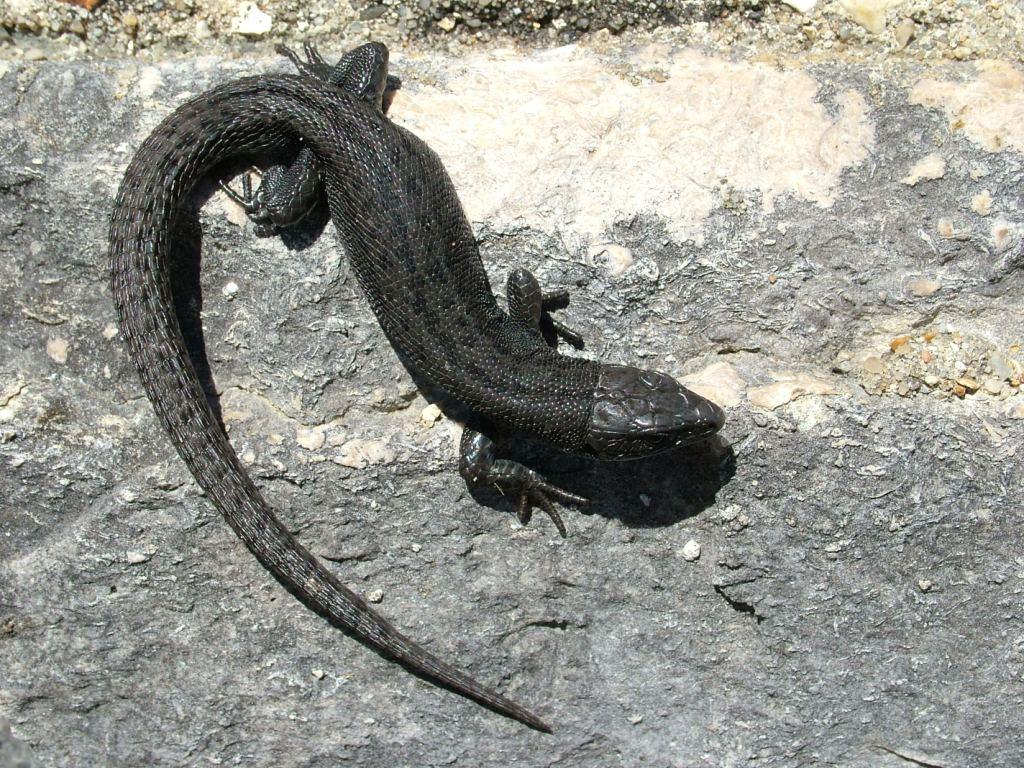 |
 |
common black lizards!!!: |
| Author | Message |
|
Robs adders Senior Member Joined: 15 Mar 2008 No. of posts: 88 View other posts by Robs adders |
Posted: 15 Mar 2008
some Common Lizard pics from 2007 Hi i am a new member I have been directed to this forum buy a friend of mine to ask for some opinions and answers to a few questions. I am a keen (amateur) wildlife photographer who has been studying a colony of wild adders for the last 5 years but there is one particular area I regularly visit that has some very unusual black lizards!! On my first encounter with one I thought I had just found a one off melanistic lizard but over most of 2007 every time I searched this area I found up to 5 different individuals, the most I counted in a day was 9 all in a area of about 3 acres!! Could this be a sub species of or common Lizard?? Or has the melanistic gene just been spread in one area. I have thought that they may be doing better doing better than the ordinary common lizards in this area as there main predators would be the snakes and the black lizards would warm up quicker than the regular ones!! Giving them the edge and the opportunity to escape predation earlier in the day!! Here are some pics of them I have lots and lots of pics of them if any one is interested I will post more pics. Regards Rob
|
|
Robs adders Senior Member Joined: 15 Mar 2008 No. of posts: 88 View other posts by Robs adders |
Posted: 15 Mar 2008
Another shot of one of the black ones and a normal one!! |
|
will Senior Member Joined: 27 Feb 2007 No. of posts: 330 View other posts by will |
Posted: 15 Mar 2008 Hello Rob Here's a pic of a similarly melanistic common lizard (male) from Boscombe in Bournemouth. Melanistic individuals can be found at high frequencies in populations of lizards and adders, especially in the far north of their range where the benefits to thermoregulation outweigh increased risk of predation due to conspicuousness. I really like the idea that, if adders (mainly hunting using non-visual cues) are the main predators, speedy black lizards might be at an advantage compared with more cryptic ones, but I suspect birds might then sway the population in favour of the typical forms - so maybe there is a balance between melanistic and typical colours ? Cheers Will  |
|
Robs adders Senior Member Joined: 15 Mar 2008 No. of posts: 88 View other posts by Robs adders |
Posted: 15 Mar 2008
Hi will thanks for your response cool pic !! It is interesting I wonder what percentage of the
|
|
armata Forum Specialist Joined: 05 Apr 2006 No. of posts: 928 View other posts by armata |
Posted: 15 Mar 2008 I know of a colony where black common lizards are prominent, also next to an adder study area of mine - its in the Mendips, Somerset. 'I get my kicks on Route 62' |
|
Robs adders Senior Member Joined: 15 Mar 2008 No. of posts: 88 View other posts by Robs adders |
Posted: 16 Mar 2008 HI This could be the same area ! as the area i am refering to is on the mendips. |
|
armata Forum Specialist Joined: 05 Apr 2006 No. of posts: 928 View other posts by armata |
Posted: 16 Mar 2008 WEll both sites have been mentioned by others who are working there. My main study area is Stockill woods, and the lizards are along an old wall on the other side of the road alongside the big pond. My other area is Charterhouse - as I said people on this forum are working the area so please liase with them. 'I get my kicks on Route 62' |
|
Robs adders Senior Member Joined: 15 Mar 2008 No. of posts: 88 View other posts by Robs adders |
Posted: 16 Mar 2008 Hi May be it isnt the same area there is a pond not to far away but the area i am in has no walls just really long grass that never gets grazed by farm livestock. I would be pleased to talk with anyone working that area.
regards Rob |
|
herpetologic2 Senior Member Joined: 15 Jun 2004 No. of posts: 1369 View other posts by herpetologic2 |
Posted: 19 Mar 2008 Send your records in! Have you got any counts of the numbers of adders you have seen over the last five years? this may be useful for the Make the Adder Count Survey - please do have a trawl through your notes and photos to try and get dates and numbers John Baker would be pleased to have any counts - johninhalesworth@aol.com Jon Vice Chair of ARG UK - self employed consultant - visit ARG UK & Alresford Wildlife |
|
Robs adders Senior Member Joined: 15 Mar 2008 No. of posts: 88 View other posts by Robs adders |
Posted: 20 Mar 2008
|
- common black lizards!!! |